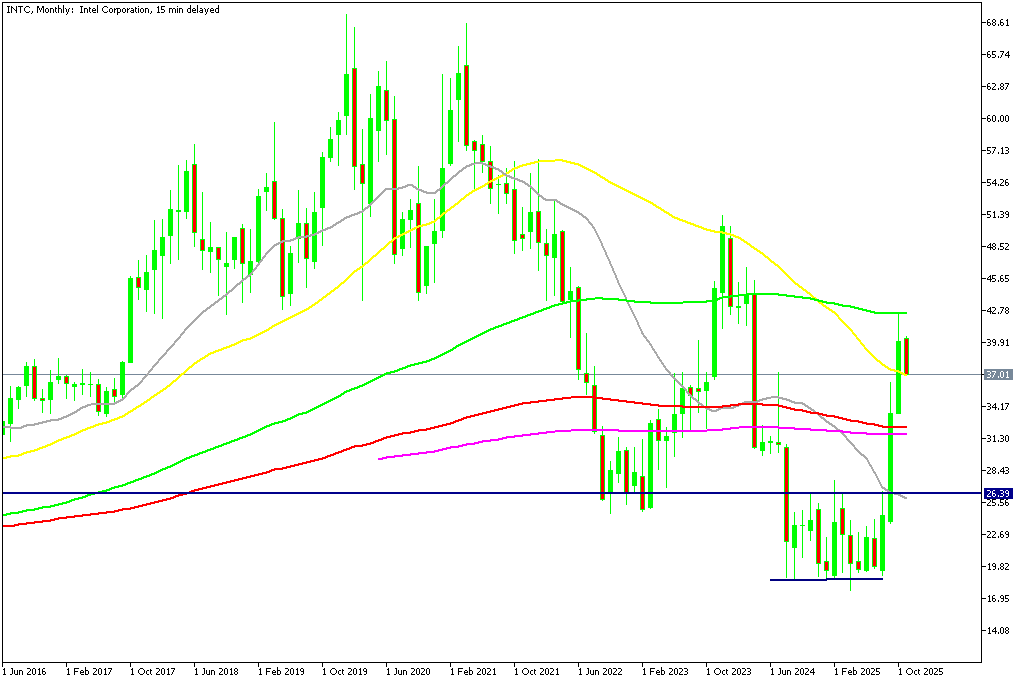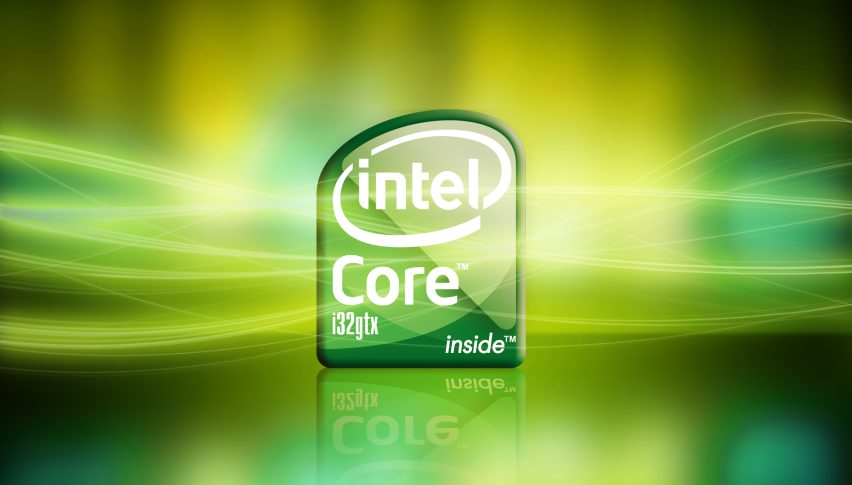Intel Stock Slips Below $37 After Rejection — Looking to Buy INTC Dip at Support?
After a months-long rally driven by investor optimism and strong policy backing, Intel’s stock has stumbled, testing the market’s confidence

Quick overview
- Intel's stock recently fell 7% after failing to maintain momentum above $42.50, a critical resistance level.
- The company's recovery has been supported by significant government backing through the CHIPS Act, boosting investor confidence.
- Technical analysis suggests that if the stock continues to decline, the $30–$32 range may serve as the next support level.
- Despite short-term volatility, Intel's long-term outlook is improving with potential partnerships with major tech firms.
Live INTC Chart
[[INTC-graph]]After a months-long rally driven by investor optimism and strong policy backing, Intel’s stock has stumbled, testing the market’s confidence in its ambitious turnaround plan.
Confidence Meets Resistance
Intel’s (NASDAQ: INTC) recent rally, once hailed as proof of a successful turnaround, lost steam this week. After surging to $42.50 — its highest level in more than a year — the stock failed to hold above the critical resistance zone and reversed sharply, falling 7% on Monday to trade below $37. The pullback marks a pause in what had been one of the chipmaker’s strongest rebounds in years, though some traders see the decline as a healthy correction within a broader uptrend.
The enthusiasm that lifted Intel over the past two months was fueled by both government support and renewed investor conviction that the company could reclaim its leadership in semiconductor manufacturing. But the inability to break above $42.50 suggests buyers may be losing momentum — at least for now.
Policy Backing and Market Momentum
Intel’s comeback story has been closely tied to public and private investment. The U.S. government’s backing through the CHIPS Act — including $8.9 billion in direct funding and loan guarantees, later expanded to nearly $16 billion — has strengthened Intel’s balance sheet and signaled Washington’s strategic intent to restore American chip dominance.
This support has helped attract institutional investors, pushing the stock up more than 100% from its August lows near $19. The surge reflected a powerful mix of policy-driven optimism, short covering, and a wave of speculative buying as traders bet on Intel’s recovery.
Technical Breakdown and Next Support Levels
From a technical standpoint, Intel’s rally ran into a wall at the 100-month simple moving average (SMA) near $42.50, a level that has repeatedly capped gains in recent years. The rejection triggered a selloff back toward the $37 zone, aligning with the 200-week SMA — a key level that now acts as near-term support.
INTC Chart Monthly – The 100 SMA Rejected the Stock
Should the decline continue, analysts are eyeing the $30–$32 range as the next area where buyers could step in. A rebound from that zone could restore upward momentum, while a deeper drop below $30 would risk invalidating the broader bullish structure.
Strategic Partnerships Bolster Long-Term Vision
Despite the near-term volatility, Intel’s longer-term outlook is improving. Reports suggest that major technology firms — including Apple, SoftBank, and Nvidia — are exploring potential partnerships or joint ventures with Intel to strengthen chip supply chains and accelerate innovation.
Such alliances could mark a turning point for Intel, which has struggled to compete with Taiwan’s TSMC and AMD in recent years. The company’s renewed focus on advanced fabrication, integrated design, and U.S.-based manufacturing is gradually rebuilding its credibility across the industry.
Conclusion: Intel’s rally may have hit a short-term ceiling, but the underlying narrative remains constructive. The recent dip below $37 reflects profit-taking and resistance pressure rather than a fundamental breakdown. With strong policy backing, potential partnerships, and growing investor interest, Intel’s recovery still has room to develop — though patience may be required before the next leg higher begins.
- Check out our free forex signals
- Follow the top economic events on FX Leaders economic calendar
- Trade better, discover more Forex Trading Strategies
- Open a FREE Trading Account



